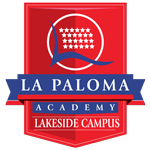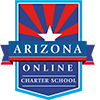March is Developmental Disabilities Awareness Month. A lot has changed in the 30 years since Ronald Reagan proclaimed the first Developmental Disabilities Awareness Month in 1987. The main change has come in education which, until fairly recently, had no cohesive plan for teaching the developmentally disabled.
It took decades of trial and error to find the best method for teaching children with special needs. For most of the last century, there were no best practices guidelines for schools to follow, and individual schools determined the methods they thought best.
Some educational philosophies promoted separating special needs learners, while others didn’t make accommodations for them at all, mainstreaming everyone into the same classroom, no matter what their abilities.
Happily, today’s educators have tools and strategies, developed over the years, which provide successful outcomes for those with special needs. The method currently used to ensure the best outcomes for special students is known as inclusion and, thanks to the Individuals with Disabilities Education Act (IDEA) of 2004, and the required implementation of an Individualized Education Program (IEP), the federal government has set the standard for special needs education.
An IEP can help students in areas like oral expression, listening comprehension, written expression, basic reading skills, reading comprehension, mathematical calculation, mathematics reasoning, or spelling, by providing individualized instruction in these areas, then returning students to the classroom for subjects where individual attention isn’t required. It should be pointed out that, while the IDEA seems to specifically address disabilities, gifted children are also considered to have special needs since they require attention outside the typical classroom, and may also require an IEP.
Since the government mandates the educational structure schools are obligated to provide, all schools should be the same, but they’re not. If you have a special needs student, what should you look for when choosing a school?
The Child Mind Institute has listed a few variables which are important in finding a good school:
- Availability – When you call the school, do you get to talk to a real person or do you have to leave a message? Are the people friendly, informative, and responsive to your needs or requests?
- Administration – If you tour the school, do you have a chance to meet with the principal? If not, are you given the opportunity to meet at a later date? Does the principal have a clear vision for the school’s inclusion policy and implementation of IEPs?
- Behavioral Issues – How does the school deal with problem behavior? What is the school’s policy on bullying?
- Paraprofessionals – Ask to speak with the paraprofessionals that will be spending time with your child. Will your child get the same paraprofessional every day?
- Guidance – Find out how many students have IEPs. Ask if all classrooms are available to students with IEPs? What opportunities do special needs students have to mingle and interact with the school’s general population?
Parents of special needs children have many questions when looking for the best school, and no school will have everything; however, Understood.org, a comprehensive resource for parents, has created a checklist to help you determine if the school you’re considering meets your requirements.
After printing the checklist, call La Paloma and arrange a tour of the campus and make an appointment to speak with the principal. You’ll find that La Paloma provides the type of inclusionary programs which will immediately benefit your student and prepare them for future success in high school and beyond.


